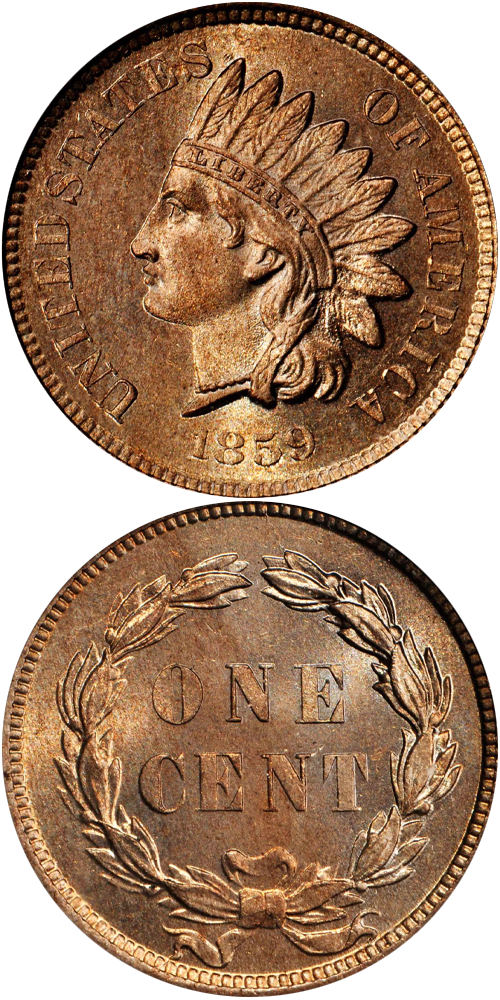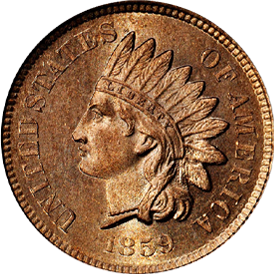Designed by: James Barton Longacre
Issue Date: 1859
Composition: 88% copper, 12% nickel
Diameter: 19 mm
Weight: 4.66 grams (72 grains)
Edge: Plain
Business Strike Mintage: 36,400,000
The Indian head cent, designed by James B. Longacre and introduced into the coinage system in 1859, was struck in copper-nickel alloy (88% copper and 12% nickel) from that point through the middle of the Civil War. During that conflict, coins of all types were hoarded, including copper-nickel cents. In their place appeared thousands of different varieties of privately-issued cent-size tokens struck in bronze. These were readily accepted by the public. The situation did not go unnoticed at the Mint, and soon a proposal was made to drop the copper-nickel metal, which had caused many striking difficulties due to its hardness, and replace it with bronze.
Further Reading
Following the adoption of copper-nickel metal, beginning in 1857 for coinage of Flying Eagle cents, pieces were struck from this hard alloy. The Mint experienced many problems. Included were difficulties in preparing the planchets and rapid die wear due to the hardness of the metal. This metal hardness situation continued after the change to the Indian head design in 1859. It was proposed that a thin copper or bronze format be adopted, but this was rejected on the theory that the pieces would not be "substantial" enough to be accepted by the public.
The type set collector will find that any Indian cent of the 1900s will suffice. Issues in this range are plentiful in all grades. I advise that the date collector adopt a condition standard and try to stick to it. For example, issues prior to 1879 might be collected in Fine grade, while later pieces (which are less expensive) might be in Extremely Fine preservation. Of course, those who can afford it would be advised to assemble Uncirculated or Proof pieces, taking care to avoid misrepresented items.
Indian head "pennies" were part of the American scene for a long time, from 1859 to 1909. Today a well-worn example has an interesting tale to tell – where has it been, what has it seen? Such items are incredibly romantic. As child in Honesdale, Pennsylvania, I once saw a group of Indian cents imbedded face-up in a concrete doorstep. Never having seen such pieces before, and realizing that they were at once unusual and rare, I desired to own one. Shortly thereafter, at an auction held as part of a church benefit, an iron bank full of pennies came up for sale. I had seen it earlier, and peering through the latticework of the toy bank I saw Indian cents within. But the price realized for the bank and contents was $3, far more than an eight-year-old could afford at the time.







